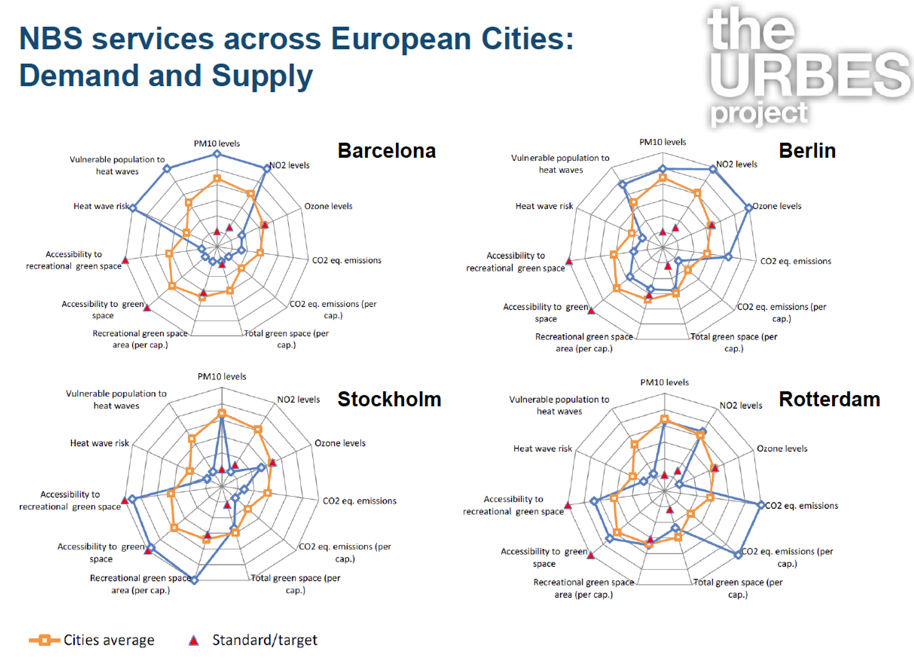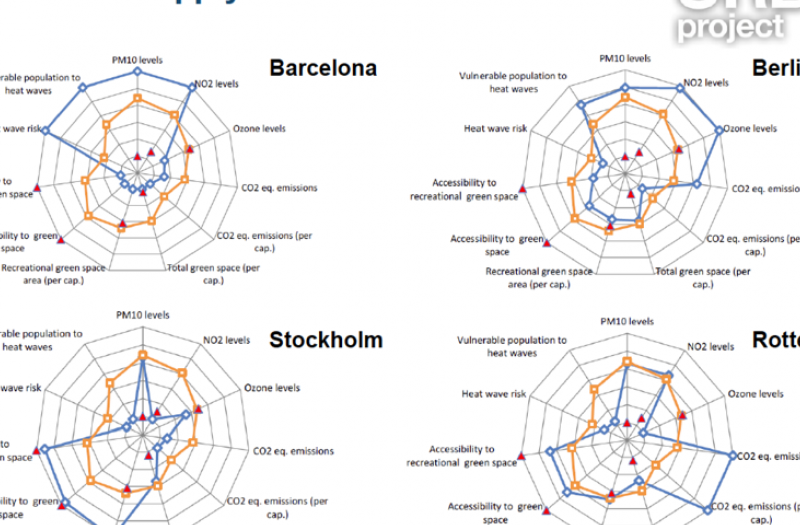URBES Berlin - A thriving city embraces its green spaces

Berlin is the capital and the largest city of Germany with a population of 3.4 million people. Berlin is influenced by a temperate seasonal climate, and around one third of the city's territory is composed of forests, parks, gardens, rivers and lakes. The city itself is in a transition because of its tremendous population loss after 1940. Today, Berlin is characterized by simultaneous urban growth and shrinkage (of population), residential vacancy on the one hand, famous (re)construction sites on the other. Next to built-up residential (25%), transport and commercial land use, forests, parks and wooden areas >40% a dominant land use which makes Berlin’s city area special and worthwhile for investigating biodiversity and ecosystems. 25% of the area is covered by arable land. Future scenarios for Berlin are primarily driven by global climate change, change in world markets and of the finance sector. Internal drivers such as demographic change and ageing, land use perforation, increase of urban brownfields and inner-urban reurbanisation affect the city region. In terms of ecosystem functions and services, Berlin will be affected by climate change and heat waves (several times in the last decade), increase of poverty and environmental injustice.
For more information on the context of the Berlin case study: https://www.youtube.com/watch?v=Yq1QtmmZTbs
The URBES project focusses on functional diversity, urban ecosystem services and NbS, institutions, economics and resilience science and worked to translate research insights into principles, landscape designs and applications. It explores the drivers behind loss/enhancement of urban ecosystem services delivered by nature based solutions such as urban green space, monetary and non-monetary valuation of biodiversity and ecosystem services in the urban landscape and what are the most effective mechanisms for the governance of non-marketed ecosystem services.
In the Berlin case study, the objectives were to i) compute general ecsosystem services at the city level and work on their valuation, and ii) Raise stakeholders’ awareness about these ecosystem services and co-develop scenarios of urban planning changes and related impacts on the delivery of ecosystem services.
Ecosystem services calculation and valuation work: see results presented in the publications and URBES factsheets, in particular:
- A quantification of ecosystem services demand and supply in 4 cities including Berlin was published by the URBES project (see Baro et al. 2015). Ecosystem...
The results were built and analysed with stakeholders of the project, and the participatory scenario development exercise allowed transferring results on the impact of different urban planning change on the delivery of ecosystem services at the city level.
The results are generally transferable for urban planning, although specific to Berlin and tailored according to local development plans and land use. Nonetheless this research is part of the URBES project, with related case studies in 7 European countries.
Accessibility and availability of green space is found more important than its relative size. The structure and key features of urban green space, rather than e.g. size per capita, are more effective measures of the delivery of ecosystem services, especially related to public health and human well being.
Socio-cultural factors strongly influence the use of urban green spaces and urban forests by inhabitants, which could be better accounted for in green space planning and development. See examples on immigrants and older aged groups (Kabisch and Haase 2014), health inequalities among children (Kabisch et al 2016) or related to urban forest management (Larondelle and Haase 2017)
This research was funded through the 2015-2016 BiodivERsA COFUND call for research proposals, with the national funders PT-DLR (Germany), NCN (Poland), RCN (Norway) and MINECO (Spain). For more iformation on BiodivERsA, visit http://www.biodiversa.org/
BiodivERsA Science-policy/society interfacing: Frederic Lemaître (frederic.lemaitre@fondationbiodiversite.fr)


